#Yolngu
Text


David Gulpilil in "Storm Boy" (1976)
#david gulpilil#actor#aboriginal australian#australian#indigenous#indigenous australian#1976#storm boy#film#yolngu#dancer
135 notes
·
View notes
Text
So probably people hunted when they burnt, not the reverse, not randomly. A Yolŋu (NT) elder explained,
'Burn grass time' gives us good hunting. It brings animals such as wallabies, kangaroos and turkeys on the fresh new feed of green grasses and plants. But it does not only provide for us but also for animals, birds, reptiles and insects. After the 'burn' you will see hundreds of white cockatoos digging for grass roots . . . If it wasn't burnt they would not be about to penetrate the dense and long speargrass and other grasses for these sources of food.³³
33. Deborah Bird Rose, Nourishing Terrains: Australian Aboriginal Views of Landscape and Wilderness, Australian Heritage Commission, Canberra, 1996, p. 67.
"Country: Future Fire, Future Farming" - Bill Gammage and Bruce Pascoe
#book quotes#country#bill gammage#bruce pascoe#nonfiction#hunting#burning#fire#yolngu#northern territory#australia#elder#indigenous australians#aboriginal australian#explanation#grass#wallaby#kangaroo#turkey#green grass#animals#birds#reptiles#insects#cockatoo#grass roots#speargrass#interconnectedness#land management
3 notes
·
View notes
Text

Noŋgirrŋa Marawili (dec)
Born c. 1938
Clan Madarrpa, Yithuwa group Moiety Yirritja
Homeland Bäniyala
6 notes
·
View notes
Text

King Stingray - Cat 5 (Cyclone)
With their second album now officially announced, King Sting drop their very first love song, and it's that killer mix of chiming surf guitars, big chorus action and Yolŋu positivity that the band have totally made their own. My fave from the second album so far! -Kris
1 note
·
View note
Text
Baker Boy, Yirrmal - Marryuna (Yolngu & English)
#dance rap#baker boy#yirrmal#marryuna#yolngu#yuulngu#pamanyungan#oceania#australia#2017#2010s#rap#Spotify
0 notes
Text
0 notes
Text
Mokoi - Day 80
Race: Night
Arcana: Death
Alignment: Neutral-Chaos
July 26th, 2024
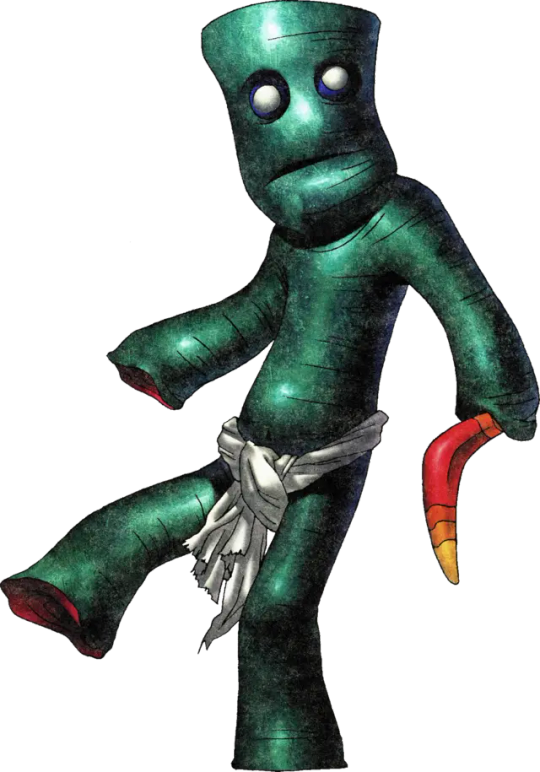
During my research about this topic, I found myself finding out about an ongoing health crisis relating to the yolngu people, and this post is dedicated to spreading awareness. Please remember to treat all of these topics with respect.
Aboriginal folklore is very separated from itself, oddly enough- In spite of Australia being the smallest continent, several beliefs are spread throughout in specific areas, making for a colorful tapestry where you can never be sure what the next area will believe in, in spite of the general overarching themes of Dreamtime. Case in point, the Yolngu people residing in northeastern Arnhem Land, an aboriginal tribe living in the Northern Territory who believe in systems of kinship and a nomadic hunter-gatherer lifestyle. Important to this culture as well is conceptions of magic, and, more importantly, what to avoid- the deep, dark underbelly of said world of magic. If one is to partake in the dark arts, after all, they would meet with a fate most undeserving- to be cursed by today's Demon of the Day, Mokoi.
As with a lot of Aboriginal folklore, Mokoi are relatively obscure in many respects. Most of the time, sources only state a line or two going over this monster, whose name literally translates to 'Evil Spirit,' describing it as a monster who would eat naughty children and devour sorcerers who dared to step into the realm of the dark. This is strange, though, as Mokoi appear to be an incredibly important fixture in Yolngu tradition, being described as the main source of death throughout the people-group... so today's gonna be another deep dive. And so soon after Arahabaki, too... ah, well. Thank you again to @eirikrjs for providing a very good rundown on this demon in this post. How do you keep coming through for me in the most random ways? Whatever, let's get into this.
As attested to in the 1970 article Myth as Language in Aboriginal Arnhem Land, the book Mortuary customs of northeast Arnhem Land, as well as... an Australian tonic blog, no I'm not kidding, an ancient tradition of the Yolngu people states that there are two different parts of the soul- one of the good, another of the bad. These parts of the soul are referred to as Birrimbirr and Mokuy, and when someone within the tribe passes away, their soul may take either of these forms based on their actions in life. However, while a birrimbirr will typically head back to its place of origin and pass peacefully, a mokuy will stick around, generally being a nuisance with asocial and unpredictable behaviors while haunting the deceased's belongings. This plays into a common tradition in Yolngu folklore, that being of the avoidance of uttering the deceased's name- not only will saying the name of a dead person possibly bring more grief to their family members and friends, but it may also bring their spirit back restlessly into the form of none other than a Mokoi, which appears to be an alternate spelling of Mokuy.
The Mokoi are dangerous spirits that appear frequently as a sort of boogeyman, attacking those who don't go out of their way to avoid them. It's to the point that the Yolngu people frequently make sculptures of the Mokoi, likely to alleviate the threat of them getting upset with them (or maybe they just wanted to sculpt them, I dunno). These spirits attack any who defile their graves, or even get too close to said graves, and those who do so or invoke the name of the dead long after their death may risk a sort of 'Spiritual Pollution' wherein they and their family suffer illness and eventual death. The consequences of speaking the names of the dead will lead to eventual death of oneself, after all. It's said, though I can't find a direct source for it so take this with a pinch of salt, that more people in Yolngu culture die of a Mokoi's attack than old age.
The importance of the mokuy and the birrimbirr cannot go understated, as well as the love and respect the Yolngu people feel for the dead. It's to the point that mentioning the name of a deceased person, even if one isn't afraid of an attack by the mokuy, is still frowned upon, and honestly, I find that beautiful. The amount of love and importance these people put on their ancestors is incredibly high and the love and respect everyone in their community shows that they are still people, deserving of love and respect. With that, though, how does a Japanese franchise portray a being from a completely different and closed-off tribe? Well, it's mixed.
Mokoi doesn't seem to take much inspiration from the Mokuy sculptures that typically depict it, though I can see them being hard to adapt.

Instead, it seems to primarily base itself off of the patterning of the sculptures, looking more like a green being loosely based on them carved out of wood and carrying with it a kylie to likely tie it even more with Australia, given that, well, boomerangs are the Australian stereotype. It's a bit stereotypical as a result of that, but I still do enjoy how it looks, being a funky and iconic design for a demon that still seems to carry some weight behind it.
However, through my research I came to learn that a lot of the yolngu people are in need of help, and I'd like to take a moment to rectify a mistake I made in my lwa analysis and actually speak on this. I don't have much room to actually speak on a still thriving community of people that I'm not a part of, but the yolngu people are currently going through a health crisis and I'd like to use this post as a way to spread awareness about this. As a still living people-group who are experiencing damages, and had their areas of worship ruined by various policy changes in Australia, I'd like to ask you to try and help them in any way that you can. While I'm not sure if this one has been vetted, please try to use any charity possible to assist these people in need, as they have gone through a lot.
#shin megami tensei#smt#megaten#persona#daily#mokoi#mokuy#i would recommend helping the yolngu people in any way you can#they're in the midst of a health crisis at the moment!
28 notes
·
View notes
Text
something that always really galls me in fantasy is the lack of cultural exchange... all part of the weird emphasis on race as like. a species difference. this one goes in this box that one goes in that box and never the twain shall meet. but you have different peoples living right next to each other over massive time scales and you're telling me there has been no intermingling? no sharing and melding of ideas aesthetics and customs? I'll kill you
#it feels so wild to me!!!#like even in difficult circumstances people interact and they learn from each other#like I'm thinking about the trade between the yolngu people and makasar trepang fishers. even though australia is geographically isolated#this shit happened!!#trepang from the modern nt made it as far as china!#to this day the word for money in yolngu matha is the same as in indonesian#and you mean to tell me that two fantasy cultures without so much as an ocean in between them don't talk. I'll kill you!!!!!!#anyway remind me to talk sometime about the hidden influence and association of namiira on bosmeri culture and religion
17 notes
·
View notes
Text
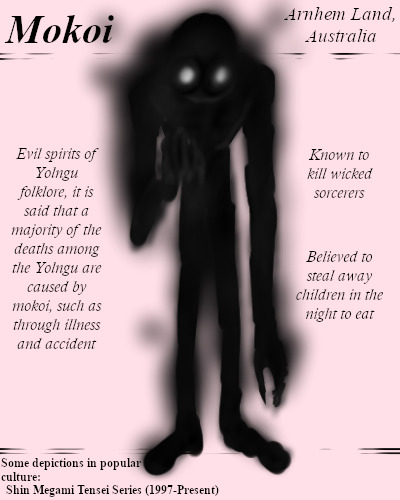
A fearsome evil spirit, he kills sorcerers and causes death in the Yolngu community.
#BriefBestiary#bestiary#digital art#fantasy#folklore#legend#myth#mythology#monster#mokoi#evil spirit#australian folklore#australian legend#yolngu folklore#yolngu legend
11 notes
·
View notes
Text
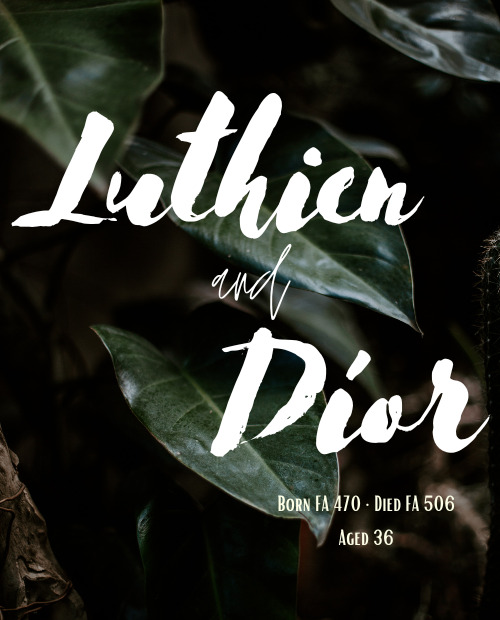
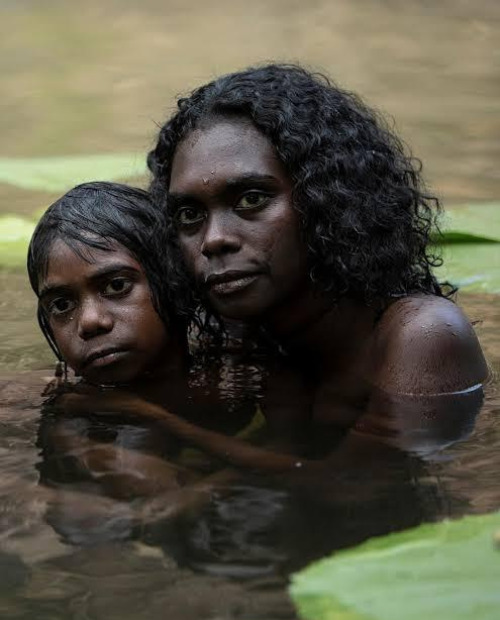
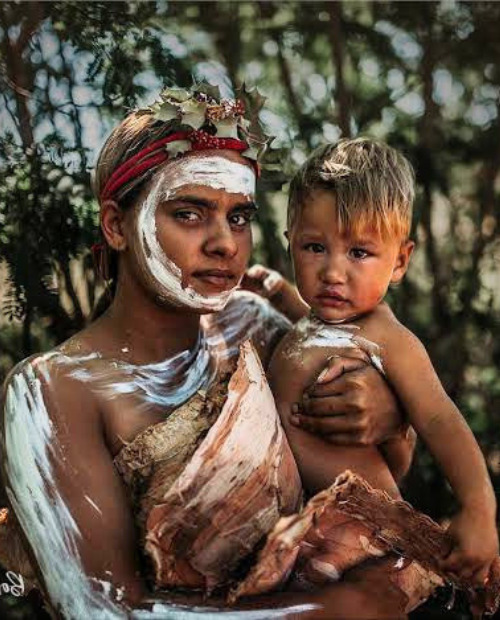
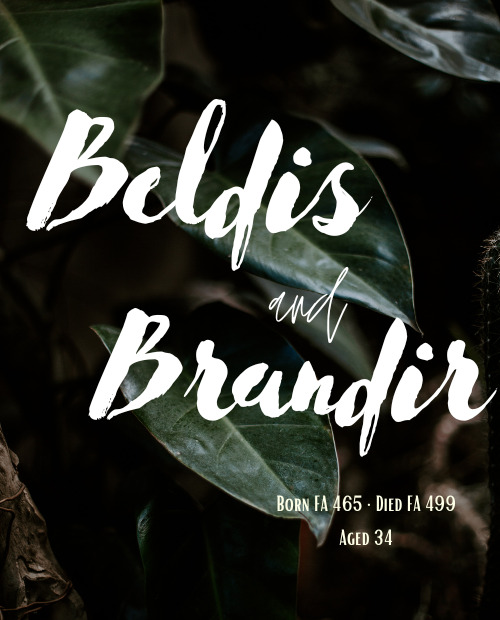


born into a time of hope, children when the Nirnaeth came, doomed by fate
For @tolkiengenweek
Part 20 of toi's indigenous tolkien series
[Image description
1: Leaves and text 'Luthien and Dior" "Born FA 470, Died FA 506, Aged 36"
2: Yolngu woman Magnolia Maymuru in water holding a Aboriginal boy
3: A Banjima woman holding her child
4: Leaves and text 'Beldis and Brandir" "Born FA 465, Died FA 499, Aged 34"
5: Leaves and text 'Morwen and Turin" "Born FA 464, Died FA 499, Aged 35"
6: a Ngarla woman holding her baby.]
#luthien#dior#morwen#turin#beldis#brandir#silmarillion#tolkien women of colour#blak australian tolkien#moodboards and edits#toi's indigenous tolkien series#toi's creations#mepoc#tolkiengenweek#contains image description
101 notes
·
View notes
Text
At this uncertain moment, I offer a bloody family saga from the frontier in the hope of us one day reaching the ultimate goal set at Uluru: the coming together after struggle, Makarrata.
"Killing for Country: A Family History" - David Marr
#book quotes#killing for country#david marr#nonfiction#uncertain#family history#frontier wars#uluru statement from the heart#makarrata#yolngu#phenomenal book#such a hard read but so important#every Australian should read it#australian history
0 notes
Text
MAAF & The Stolen Generations
It’s NAIDOC week y’all which has reminded me of that busted ass comic page, ‘MAAF’, specifically chapter 9. For the most part I’m sure this comic is a cool exploration of Indonesia and Australia but chapter 9 (in the author’s own words) includes a part regarding the Stolen Generations wherein, “Yolngu (Australia) became white and lost his memory”. I may sound a little harsh towards this author but I think they did have good intentions and poor execution of this concept. For context, I myself am the grandchild of a stolen child and so I do take issue when this subject is handled poorly.
Warning: This may include the images and names of Aboriginal and Torres Strait Islander people who have since passed.
This is a fair warning that this will be long but I’m going to share some information on the subject to hopefully convey my grievances with the comic chapter. This will be upsetting and triggering at times so keep in mind this involves the kidnapping and abuse of children. To start, below is a summary of the philosophy behind the Stolen Generations.

This image shows how the Stolen Generations was intended to work. You take an Aboriginal child from their home who has a white parent, referred to as the dated terms ‘Half-Caste’ or ‘Half-blood’. Then that child goes on to procreate with a white person to produce a child with more ‘white blood’, then that child is usually taken themselves and repeats the process until you end up with a child who is of ‘white blood’. This process was often referred to as ‘breeding out the black’ or ‘breeding out the colour’, which was heavily based on blood quantum and phenotypical features. Western Australia’s Chief Protector of Aborigines (1915-1936) and Commissioner for Native Affairs (1936-1940), A. O. Neville (also known as ‘Mr.Devil’ by Aboriginal people), is pictured below.
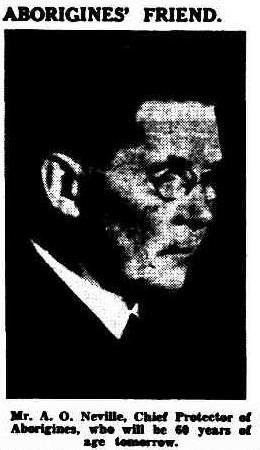
He is quoted as saying:
"[T]hey have to be protected against themselves whether they like it or not. They cannot remain as they are. The sore spot requires the application of the surgeon's knife for the good of the patient, and probably against the patient's will."
This epitomises the justifications of ‘biological assimilation’ that the orchestrators and supporters of the Stolen Generations often used to continue this cycle (officially) for almost one hundred years from the mid-1800s to the 1970s*.
(*Indigenous children were also unofficially wrongfully taken by child services and placed in white homes or institutions beyond this date, I recommend watching After the Apology (2017) for some of this.)
But where were these children taken to exactly?
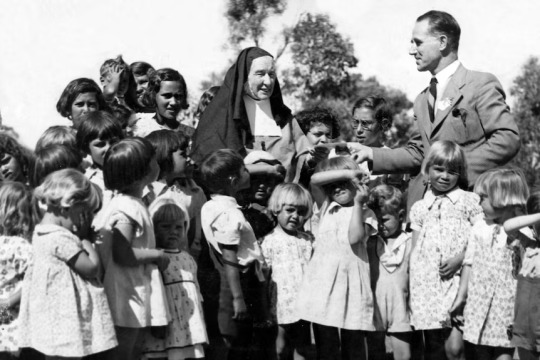
They were called missions and were typically Catholic but could be run by other Christian denominations such as Lutherans. Children essentially grew up being forced into practising the religion of the institution they were placed in. The abuses that happened in these institutions were prolific and entailed the attempt at a total loss of connection to Indigenous families, cultures and languages. Specific examples of the conditions of many of these missions include stories of harsh abusive punishments, maggots in the food, and sexual abuse. Many children were taken in infancy or at very young ages, some taken directly from hospitals they were just born in, either never knowing their families or knowing very little of them and being subjected to these abuses their entire lives leading up to adulthood.
I would recommend watching The Rabbit Proof Fence (2002) for a little more of an introductory ‘visual example’ of how missions typically looked and ran, albeit much more watered down than what the lived reality was. For that, I suggest seeking out the stories of former stolen children.

Now maybe just with that background you can see my grievances with chapter 9 of MAAF but I’ll just spell it out. I take major issue with depicting Australia as literally turning from Yolgnu to a white man as a result of the Stolen Generations - taken children were and always will be Aboriginal and taken children still always belonged and continue to belong to their family’s language groups. Tangentially, just to cover all bases here, I also take issue with implying light skinned Aboriginal people aren’t Aboriginal because of the same history but MAAF quite literally TURNED A YOLGNU MAN INTO A WHITE MAN? As stated by the author themself - so I don’t believe they were making an astute commentary on how really light skinned Aboriginal people will always be Aboriginal, I think instead it’s exactly what it looks like.
I can’t control what content people choose to make, and I’m not necessarily totally against using the medium of Hetalia fanworks to discuss historically sensitive subjects either. However, I will just say this - Please consider the work you make public, because these sensitive issues have affected real people who might come across that work. I've seen a similar handling of Canadian residential schools in the Hetalia fandom which was a very similar concept to the Stolen Generations in Australia, and of course, these depictions have also fallen short by depicting this as a literal 'white metamorphosis' of Indigenous children. To convey just how much this has bothered me, chapter 9 of MAAF is frankly my version of one of those probably well meaning but still super insensitive 9/11 America fanfictions that just come off gauche. I suppose I just hope people now have the tools to look at these depictions a little more critically than the fandom historically has?
Anyways, that's mostly it. See ya.
EDIT: Some text got lost when I copied it over from another document so I've added the missing text again.
EDIT 2: I've also seen a lot more stuff from MAAF and the artist even regarding some questionable choices regarding the interpretation of SEA Indigneous peoples and North American Indigenous peoples, so yeah, MAAF and the artist themselves probably aren't the most reliable sources out there in terms of the interpretation of Indigenous peoples GENERALLY speaking... 😅
ANYWAYS - Thank y'all for showing interest in this post, I'm very passionate about sharing information on the Stolen Generations and hopefully using my unique perspective for some good.
#hetalia#hws#hetalia fandom#historical hetalia#hws australia#hws indonesia#aph australia#hetalia australia#aph indonesia#hetalia world stars#hetalia axis powers#aph#fandom rant#big brain michi#tw sensitive content#hws canada#hetalia fanart#hetalia fanfiction#hetalia critical
106 notes
·
View notes
Text
So I just restarted Y: The Last Man as it’s been a few years and I immediately tripped over this in the very first issue:

Okay, from the landscape and art they’re pitching for presumably somewhere in the Northern Territory. Might be the MacDonnell Ranges, might be Kakadu, could be anywhere in between.


This panel in particular is modelled off a particularly famous piece of art at Nourlangie Rock in Kakadu.

…DHARAWAL???
Uh. No. There is absolutely no way, shape or form that’s Dharawal Country.
This is at best guess Bininj land in the NT, if we use the Kakadu art as location confirmation. Dharawal people come from the Illawarra, south of Sydney in NSW.
By no stretch of the imagination could anyone ever call the Illawarra the Outback.
Incredible level of research fail (if it had said Yolngu or even Pitjantjatjara for instance I wouldn’t have blinked, in terms of the landscape being sort of vague but a kind assumption would work for either extreme and they’re both well known NT peoples)
It’s such a research oops, but now I’m bewildered by what on earth Vaughan could have been reading that he fixed on Dharawal as a name to use.
#like…how would Dharawal even come up in research about Aboriginal groups in the outback?#did he just decide it sounded good?#that’s half the country away#that is NOT the Nasho that Beth is hanging out in#or Budderoo or even Morton National Park
14 notes
·
View notes
Text



==
Just for fun...


There's a weird Noble Savage idealism which verges on a fetish, a perception that primitive peoples were all peaceful and harmonious... until European people came along.
But it isn't true. Look at your likelihood of dying a violent death in tribal societies.
https://quadrant.org.au/opinion/bennelong-papers/2013/05/the-long-bloody-history-of-aboriginal-violence/
The long history of Aboriginal violence — Part II
TRIBAL warfare and paybacks were endemic. In "Journey to Horseshoe Bend", anthropologist T.G.H. Strehlow described a black-on-black massacre in 1875 in the Finke River area of Central Australia, triggered by a perceived sacrilege:
"The warriors turned their murderous attention to the women and older children and either clubbed or speared them to death. Finally, according to the grim custom of warriors and avengers they broke the limbs of the infants, leaving them to die ‘natural deaths’. The final number of the dead could well have reached the high figure of 80 to 100 men, women and children."
Revenge killings by the victims’ clan involved more than 60 people, with the two exchanges accounting for about 20% of members of the two clans. (When Pauline Hanson, then member for Oxley, quoted this account in 1996, an Aboriginal woman elder replied, "Mrs Hanson should receive a traditional Urgarapul punishment: having her hands and feet crippled.")
Escaped convict William Buckley, who lived for three decades with tribes around Port Phillip, recounted constant raids, ambushes, and small battles, typically involving one to three fatalities. He noted the Watouronga of Geelong in night raids ‘destroyed without mercy men, women and children.’
Historian Geoff Blainey concluded that annual death rates from North-East Arnhem Land and Port Philip, were comparable with countries involved in the two world wars, although Blainey’s estimate could be somewhat on the high side.
Other black-on-black massacres include accounts from anthropologist Bill Stanner of an entire camp massacre, an Aurukun massacre in the early 20th century, Strehlow’s account of the wiping out of the Plenty River local group of Udebatara in Central Australia, and the killing of a large group of men, women and children near Mt Eba, also in Central Australia.
Strehlow’s wife Kathleen Strehlow wrote:
“It would be no exaggeration to say that the system worked as one of sheer terror in the days before the white man came. This terror was instilled from earliest childhood and continued unabated through life until the extremity of old age seemed to guarantee some immunity from the attentions of blood avenger or sorcerer alike for wrongs real or imaginary…children were not exempted from capital punishment for persistent offences against the old tribal code.”
The Murngin (now Yolngu) in NE Arnhem Land during 1920s practiced a deadly warfare that placed it among the world’s most lethal societies. The then-rate for homicides of 330 per 100,000 (which Jarrett suggests could be grossly under-estimated) was 15 times the 2006-07 "very remote national Indigenous rate" of 22, and 300 times the 2006-7 national non-Indigenous rate. That Murngin rate was worse than in Mexico’s present Ciudad Juarez drug capital (300 homicides per 100,000), and more than three times worse than the worst national current rate (Honduras).
And they didn't even have to kill.
http://hawaii-guide.info/past.and.present/history/tahitian.takeover/
Hawaii Tahitian Takeover
Around 1000 A.D., Tahitians from the islands of Ra’iatea, Bora Bora, and Huahine arrived in Hawaii. With their larger statures, they easily overpowered the islands’ inhabitants, descendants of Polynesian settlers that had arrived several hundred years prior.
Although the Tahitians didn’t slaughter the natives, they reduced them to commoners, calling them menehune (an insult meaning “people of small status”) and imposed their own political system and customs on them.
The people who are purported to be Hawaii's "indigenous" or "first nations" or "first peoples" aren't. They're invaders, colonizers and occupiers who arrived second, subjugated the people who were already there and made them second-class citizens.
#tribal society#Noble Savage#tribal violence#violence#indigenous peoples#colonialism#colonization#decolonize hawaii#occupation#invaders#aboriginal violence#Hawaii#Australia#religion is a mental illness
15 notes
·
View notes
Text
#Woodensday:

Peter Wadaymu Ganambarr (1930-1997) - Yolngu, Ngaymil clan, Dhuwa moiety
Bark Painting showing Wititj at Garrimala, c.1968-71
Galiwin'Ku, Australia
Bark, pigments 56 x 23.8 x 0.8 cm
On display at Baltimore Museum of Art
Wititj = the sacred rainbow serpent (olive python)
#australian art#animals in art#museum visit#20th century art#Aboriginal art#Indigenous art#Baltimore Museum of Art#painting#bark painting#Woodensday#Peter Wadaymu Ganambarr#rainbow serpent
23 notes
·
View notes
Note
Do you have any dark skinned fcs you’d like to see gif packs of? I’m very faceblind and not as up on media as I should be but I’m practicing my work and would love to help those resources
Lori Tan Chinn (1948) Hoisan Chinese.
Nandita Das (1969) Indian.
Sendhil Ramamurthy (1974) Indian.
Grace Park (1974) Korean.
Nawazuddin Siddiqui (1974) Indian.
Dominique Jackson (1975) Afro Tobagonian - is trans.
Trevor Jamieson (1975) Pitjantjatjara / Kukatja, Noongar.
Florence Kasumba (1976) Ugandan.
Sterling K. Brown (1976) African-American.
Danai Gurira (1978) Shona Zimbabwean.
Konkona Sen Sharma (1979) Indian.
Nonso Anozie (1979) Nigerian.
Tannishtha Chatterjee (1980) Indian.
Yetide Badaki (1981) Nigerian - is bisexual.
Lupita Nyong'o (1983) Mexican Luo Kenyan.
Gabourey Sidibe (1983) Senegalese / African-American.
John David Washington (1984) African-American.
T'Nia Miller (1985) Afro Jamaican - is a lesbian - has spoken up for Palestine!
Radhika Apte (1985) Indian - has spoken up for Palestine!
Jodie Turner-Smith (1986) Afro Jamaican.
Chai Fonacier (1986) Bisaya Filipino - has spoken up for Palestine!
Susan Wokoma (1987) Nigerian - has spoken up for Palestine also has donated to an auction for Cinema4Gaza!
Lashana Lynch (1987) Afro Jamaican.
Michaela Coel (1987) Ghanaian - is aromantic - has spoken up for Palestine!
Ritesh Rajan (1988) Indian.
Anna Diop (1988) Senegalese.
Daniel Kaluuya (1989) Ugandan.
Andrea Bang (1989) Korean.
Lolly Adefope (1990) Yoruba Nigerian - has spoken up for Palestine!
Stephanie Hsu (1990) Taiwanese.
Varun Saranga (1990) Indian.
Shaunette Renée Wilson (1990) Afro Guyanese.
Antoinette Robertson (1990) Afro Jamaican.
Paapa Essiedu (1990) Ghanaian - has spoken up for Palestine and donated an auction to Cinema4Gaza!
Nyma Tang (1991) Sudanese.
Denée Benton (1991) African-American - has spoken up for Palestine!
Shamier Anderson (1991) Afro Jamaican.
Sheila Atim (1991) Ugandan.
Melinda Shankar (1992) Indo-Guyanese.
Clarence Ryan (1992) Unspecified Aboriginal Australian.
Haiesha Mistry (1993) Gujarati.
Kim Adis (1993) Bisaya Filipino.
Stephan James (1993) Afro Jamaican.
Nicole Kang (1993) Korean.
Baykali Ganambarr (1994) Yolngu.
Kofi Siriboe (1994) Ghanaian.
Simone Ashley (1995) Tamil Indian.
Mouna Traoré (1995) Afro Haitian and Malian.
Duckie Thot (1995) South Sudanese.
Brandon Soo Hoo (1995) Chinese - has spoken up for Palestine!
Ashton Sanders (1995) African-American.
Zuri Reed (1996) African-American.
Micheal Ward (1997) Afro Jamaican - has spoken up for Palestine!
Magnolia Maymuru (1997) Yolngu.
Jasmeet Baduwalia (1998) Indian.
Lovie Simone (1998) Ghanaian / African-American.
Olly Sholotan (1998) Nigerian
Hope Ikpoku Jnr (2001) Black British - has spoken up for Palestine!
Gerrard Lobo (?) Indian.
Jacob Junior Nayinggul (?) Yolngu.
Natassia Gorey-Furber (?) Central Arrente.
Jimi Bani (?) Wadagadum Torres Strait Islander.
Sasha Morfaw (?) Cameroonian.
Karim Diane (?) Mandingo.
Hey anon! I wouldn't consider these all to be dark-skinned but they're definitely considered dark in their respected industries. Please send in any suggestions and I can add them!
11 notes
·
View notes